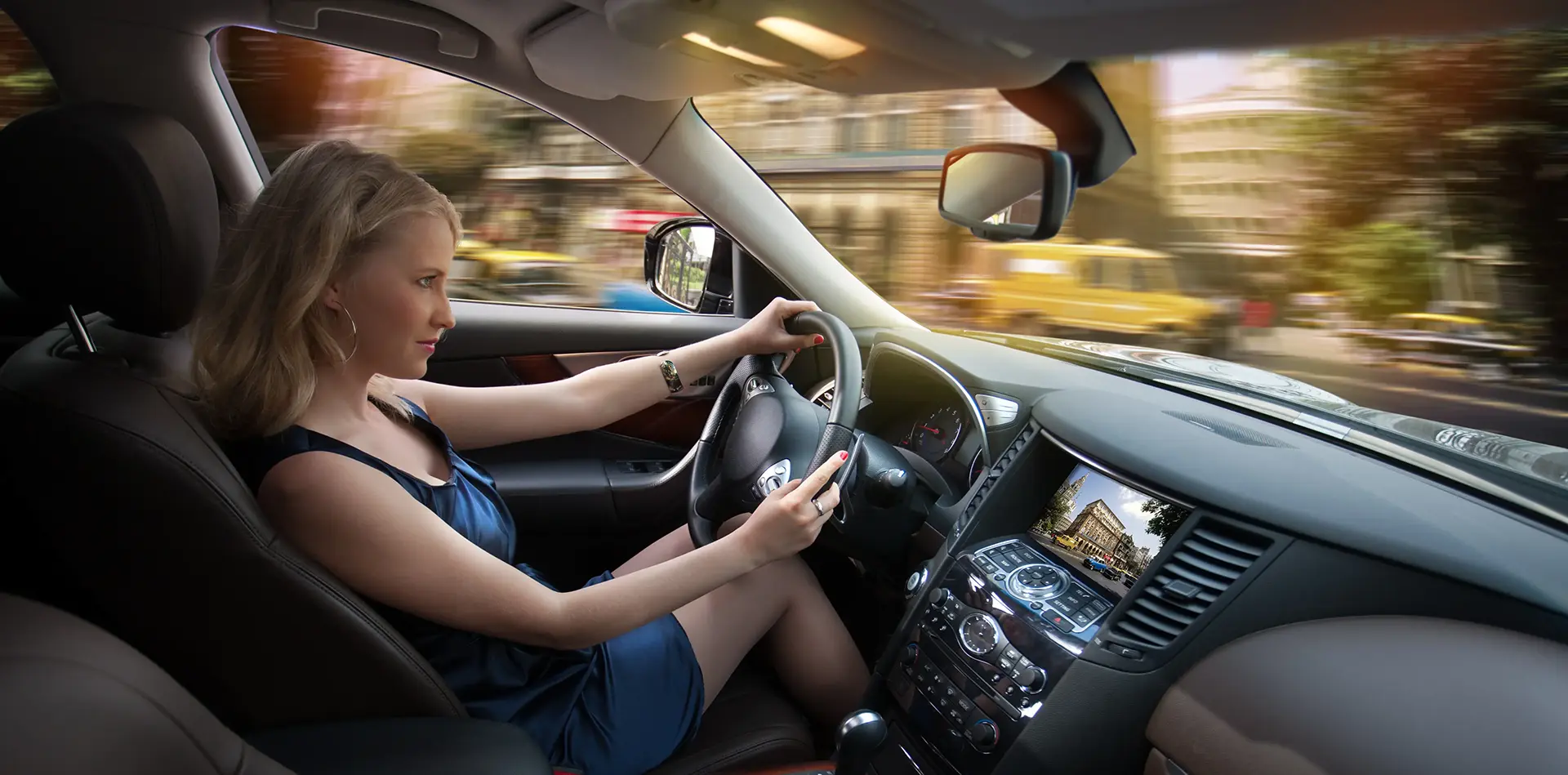Driving can cause back pain to both men and women, but as most cars are predominantly designed for men, many smaller women are suffering and don’t realise why.
The pedals
Most men can easily change gear by leaving their heels on the floor and swivelling their foot from the accelerator to the brake. Ladies with smaller feet can’t do this, and have to pick their foot off the floor and place it on the brake pedal. If they are changing gear at the same time, they could end up with both feet off the floor momentarily, which puts a lot of strain through the lumbar and lower abdominal muscles in supporting the weight of both legs. Commuting through town can involve repeating this bilateral leg lift tens (or even hundreds) of times every day.
Seat position
Research has shown that sitting with the back of the seat reclined to about 135o reduces the weight and strain through the base of the spine. If you are short, you may want to sit upright to be able to see over the dashboard clearly, but this will put a lot of pressure through the lumbar spine and can cause back pain.
This can be corrected by raising the seat base (if the adjustment is available) or by adding a firm cushion to raise up the seat, so that you can recline the back of the seat and reduce the pressure on the lumbar spine. 135o may be a bit extreme for some people, but reclining the back of the seat even a few degrees at first can often ease low back pain.
Three door versus five door cars
It may seem counterintuitive to have a five door car if you are small, but two door cars have larger doors, to allow passengers to get into the back of the car.
This means two things:
- These doors are much bigger and heavier, particularly if the camber of the road is against you. This can strain the shoulder and elbow because of the extra force need to push the door open.
- The door pillar is much further back, making it difficult to reach the seat belt. The driver has to twist hard to the right to reach the seat belt which can aggravate the low back if they reach with the left hand, or cause rotator cuff problems in the right shoulder if they try and reach backwards with the right hand,
A five door car will have doors that are smaller and lighter. The door pillar will be just behind the driver’s seat, so easier to reach the seat belt with less rotation to twist behind you.
Manual versus automatic
As previously mentioned, ladies with small feet have to lift both legs simultaneously to brake and clutch, which is hard work for the low back muscles. An automatic car allows one foot to be constantly on the floor, as you don’t need to declutch. Allowing more stability and support for the base of the spine.
Some gear sticks can be sprung to third and fourth gear so that, to reach first or second gear, you have to push the gear stick away from you by rotating and abducting the shoulder, this can lead to repetitive strain injuries to the shoulder and neck, if repeated multiple times in an urban commute.
An automatic car allows you to have both hands on the steering wheel at all times, which is much easier on the neck and shoulder.
Automatic cars are now almost as fuel efficient as manual cars, the gear changing is smooth and they are very reliable. Patients sometimes make the excuse that you can’t push start an automatic car – but realistically when WAS the last time you push started a car? Most cars have antilock brakes and numerous improvements.
If you have back or shoulder/neck problems, try an automatic car, it will make your driving so much easier.
Short drivers can be injured by the air bag
If you are short and sit close to the steering wheel so that you can reach the pedals, you are at risk from injury from the airbag.
In an automatic car you don’t have to compress a clutch pedal flat to the floor, so you can sit a little further back from the steering wheel and reduce this risk.
The Effect of Height on Injury Outcome for Drivers of European Passenger Cars


